Case Study: Run Optimization for an Ironman World Championship Athlete
Respiratory analysis, which can be examined as part of any metabolic assessment, can be incredibly beneficial for coaches. However, it is an underutilized tool in many cases. To help shed light on the benefits of respiratory analysis in enhancing athletic performance, we interviewed Dr. Andrew Sellars, Co-Founder of VO2 Master, to learn about: Here’s whatContinue reading "Case Study: Run Optimization for an Ironman World Championship Athlete"
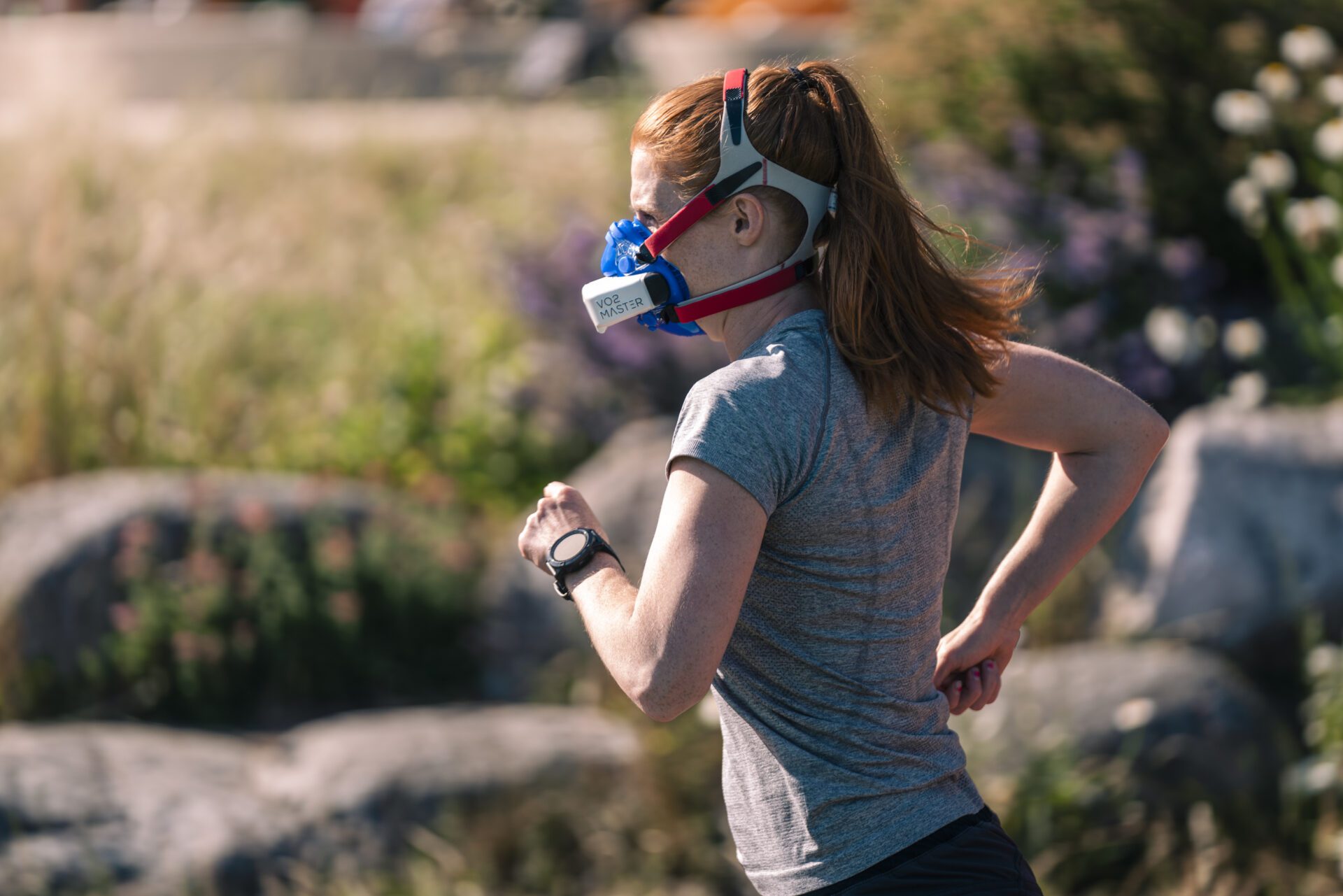
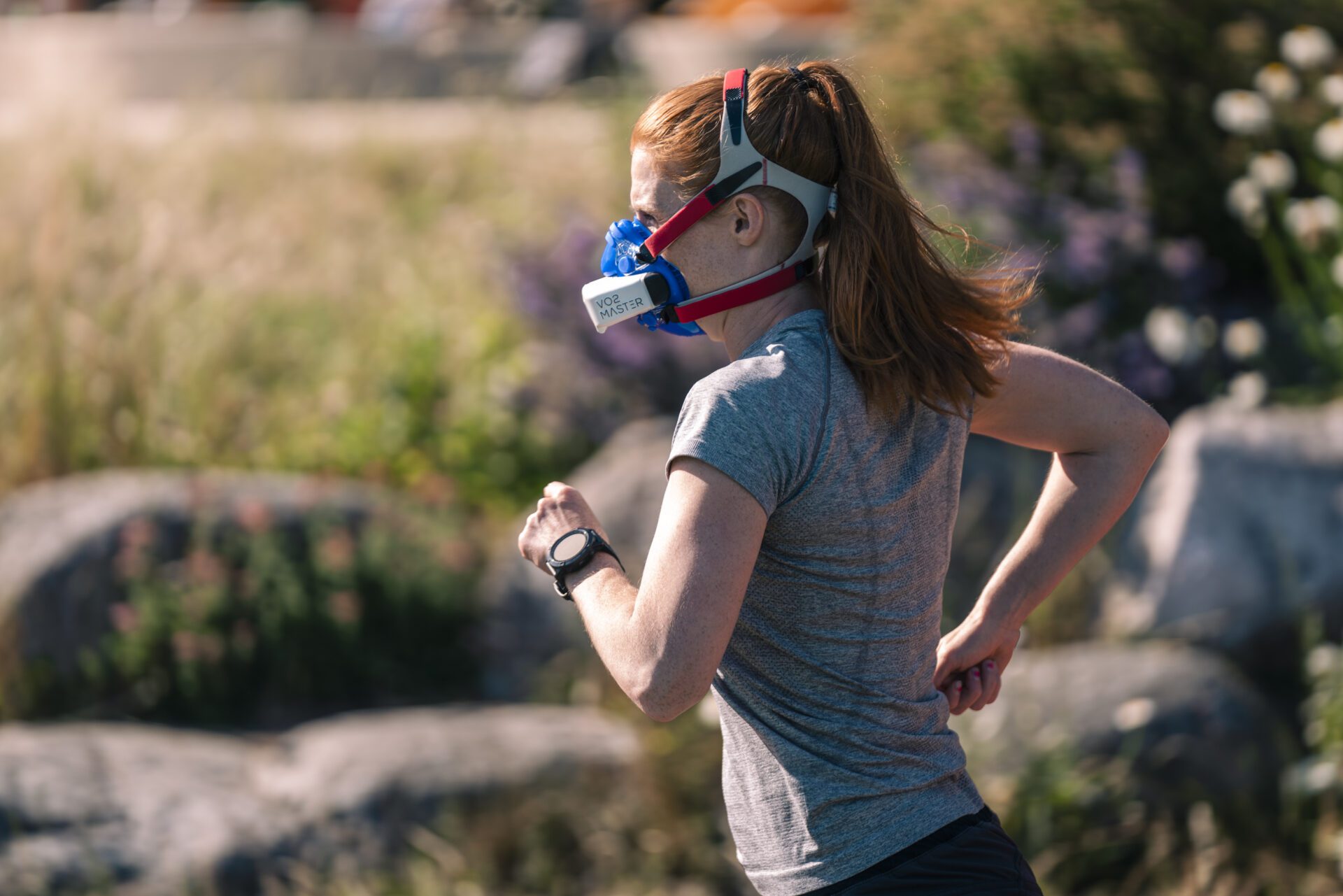
Respiratory analysis, which can be examined as part of any metabolic assessment, can be incredibly beneficial for coaches. However, it is an underutilized tool in many cases.
To help shed light on the benefits of respiratory analysis in enhancing athletic performance, we interviewed Dr. Andrew Sellars, Co-Founder of VO2 Master, to learn about:
- How he leverages respiratory data to help athletes improve their performance
- His tips and advice for how coaches can leverage respiratory analysis from VO2 Master data.
Here’s what he told us.
How have you used VO2 Master to help a real-world athlete?
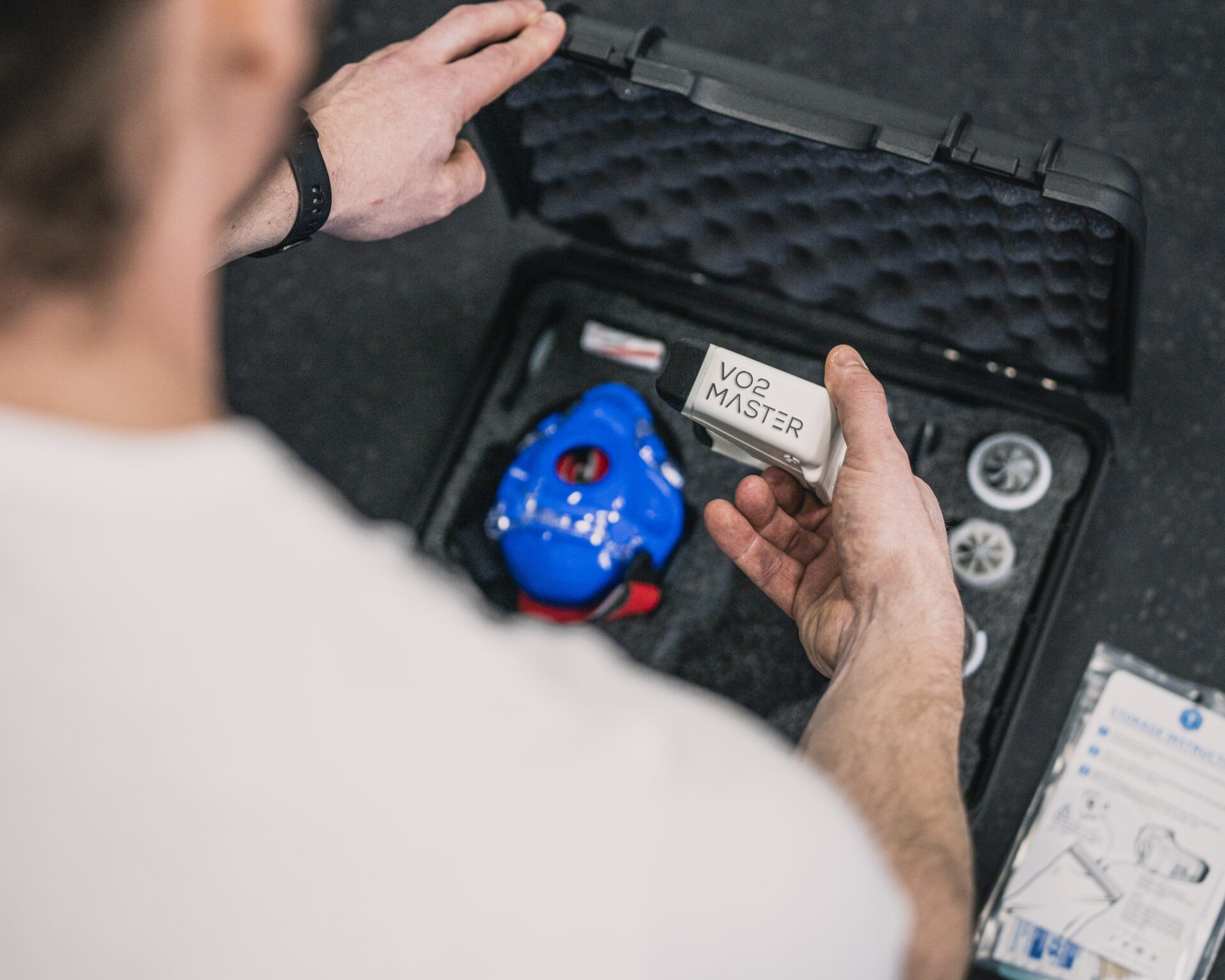
Dr. Andrew Sellars: In working with a high-performance triathlete preparing for the Ironman World Championships, it was clear through VO2 Master analysis that one of the limitations to his run speed was a result of slow cadence.
During field testing on a track, we saw three distinct patterns as he approached race pace.
The first thing we noticed was his cadence actually decreased as he tried to run faster. Along with this slower cadence, he was forced to extend his stride length to maintain his speed.
We then noticed he had switched to a 2:2 breathing pattern. This refers to the athlete inhaling for two foot strikes, then exhaling for two foot strikes.
At a cadence of 90 RPM, this would equate to a breath rate of 45 breaths per minute.
In follow-up respiratory testing, we saw that he was unable to coordinate an efficient breath rate higher than 45 breaths per minute.
We interpreted this as being a limitation that resulted in him adjusting his cadence down to avoid losing control of his breathing pattern.
Equipped with this information, we worked on two training ideas.
The first was to improve his breathing efficiency so that he could reduce his respiratory rate to 3:3 or 4:4 patterns which would yield similar minute ventilation volumes at lower breath rates.
This meant training him to take larger controlled breaths with each inhalation and focusing on full exhalation with each breath cycle. This pattern eliminates some dead space in the system and improves his sustainability of effort.
The second training focus was to improve his respiratory coordination so that he could tap into a breath response rate of 48 to 50 breaths per minute for any high-intensity interval sessions, and for shorter events that often require higher respiratory efforts.
The improved coordination of his breathing system, allowed him to run a 2:2 breathing pattern at an increased cadence of 92-96 RPM.
What were you looking for in the metabolic test results with the VO2 Master?
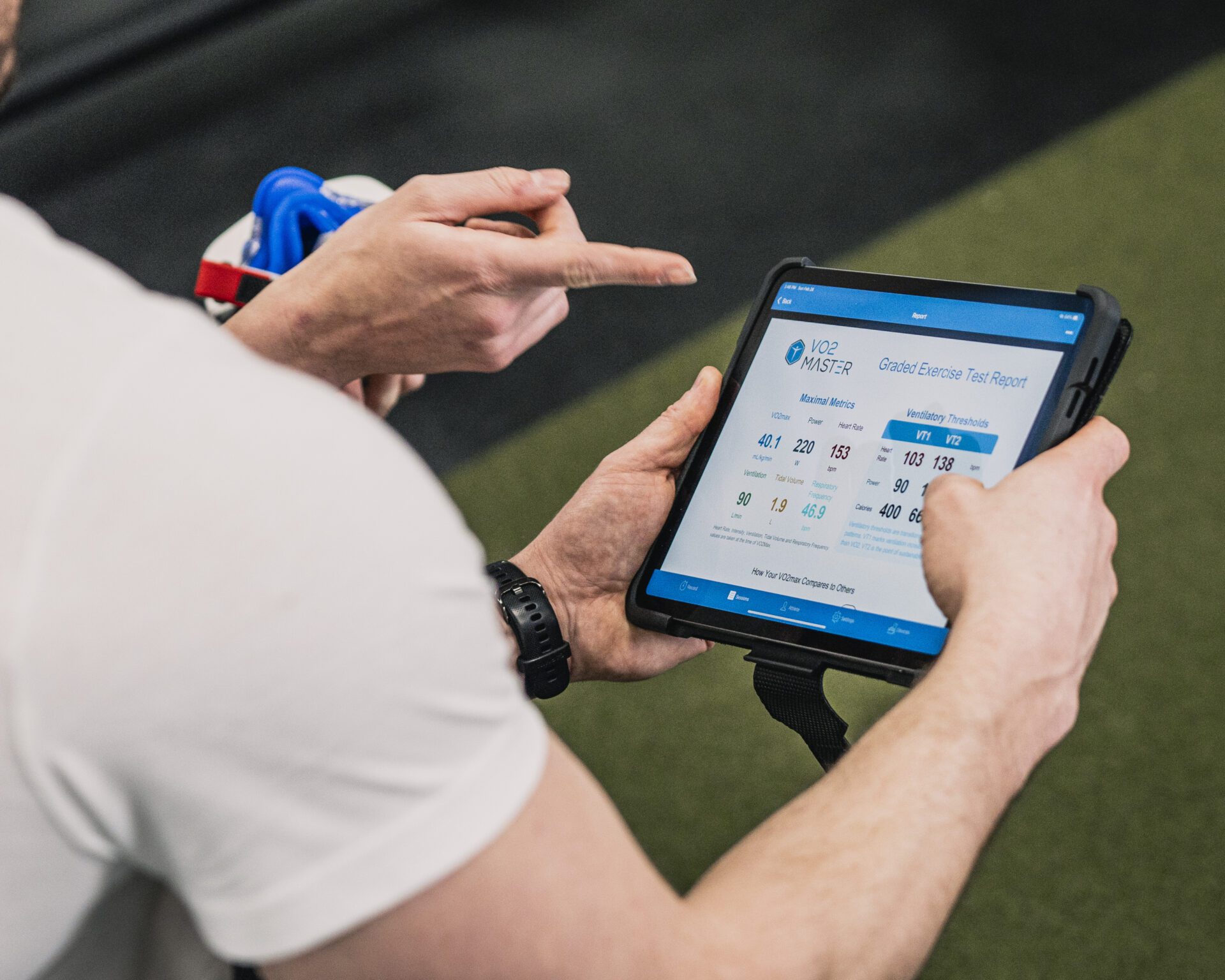
In this case, we were looking specifically at the breathing patterns as a key indicator of performance limitations.
We used the VO2 Master analyzer intermittently in subsequent training to examine whether he was able to maintain the breathing patterns we had suggested and trained throughout a long session.
We also examined the trend of efficiency over time as we reduced his over-striding and showed him that he could maintain more efficient running by shortening his stride with faster turnover.
What should other coaches look for in similar scenarios?
When you’re looking at an athlete’s biomechanics, whether in running, cycling, swimming, or any other sport, pay close attention to their breathing pattern.
You should monitor these patterns at sustainable outputs, race paces, and max efforts and pay close attention to how their breathing changes at or just before reaching those levels.
You may find that there’s a breathing dynamic that’s contributing to the loss of technique.
Along those same lines, the diaphragm is an important core stabilizer. If an athlete has an erratic breathing pattern, this can contribute to poor core stability and is often the tipping point to poor technique.
Your aim with your athlete should not only be to achieve efficient breathing patterns but also to achieve consistent ones. Steady breathing rates and volumes can be clearly seen in the VO2 Master app.
Let’s take runners, for example.
In your VO2 Master data, you will likely find clear delineations between tempo running, jogging, and race-pace running, and there’s probably a breathing pattern that fits closely with each of those three intensities.
At low intensity, athletes often breathe in a 4:4 pattern—inhaling for four strides and exhaling for four strides. If they’re running at 88 rpm, this comes out to 22 breaths per minute. It’s common to see athletes breathing between 19 and 23 breaths per minute in a 4:4 pattern, and the only difference in breath rate is how fast their feet are moving.
Then, when they start to move a bit faster, they will quite often jump to 30 breaths per minute. This sometimes happens in a 3:3 breathing pattern but it’s common to see people doing a 4:2 pattern as well.
Finally, when they’re running fast, they typically switch to a rate that is close to 45 breaths per minute because they’re breathing in a 2:2 pattern.
The interesting thing is that almost everybody breathes at those levels at different intensities and tempos when they’re running.
So, if they’re breathing 20-25 breaths per minute, it’s clearly an easy exertion level. At 45 breaths per minute, it’s likely that they’re pushing quite hard. Some people will hit a plateau for a few steps in between and others will go straight from 25 to 45.
This all matters because, if an athlete can’t breathe faster than 45 breaths per minute, they’ll never be able to run a faster cadence because they’ll be forced into an erratic breathing pattern.
So, if your athlete wants to go faster, they have to take steps to be able to breathe faster—and that’s where your work as a coach comes into play.
How did you apply the data you obtained from the VO2 Master analysis?
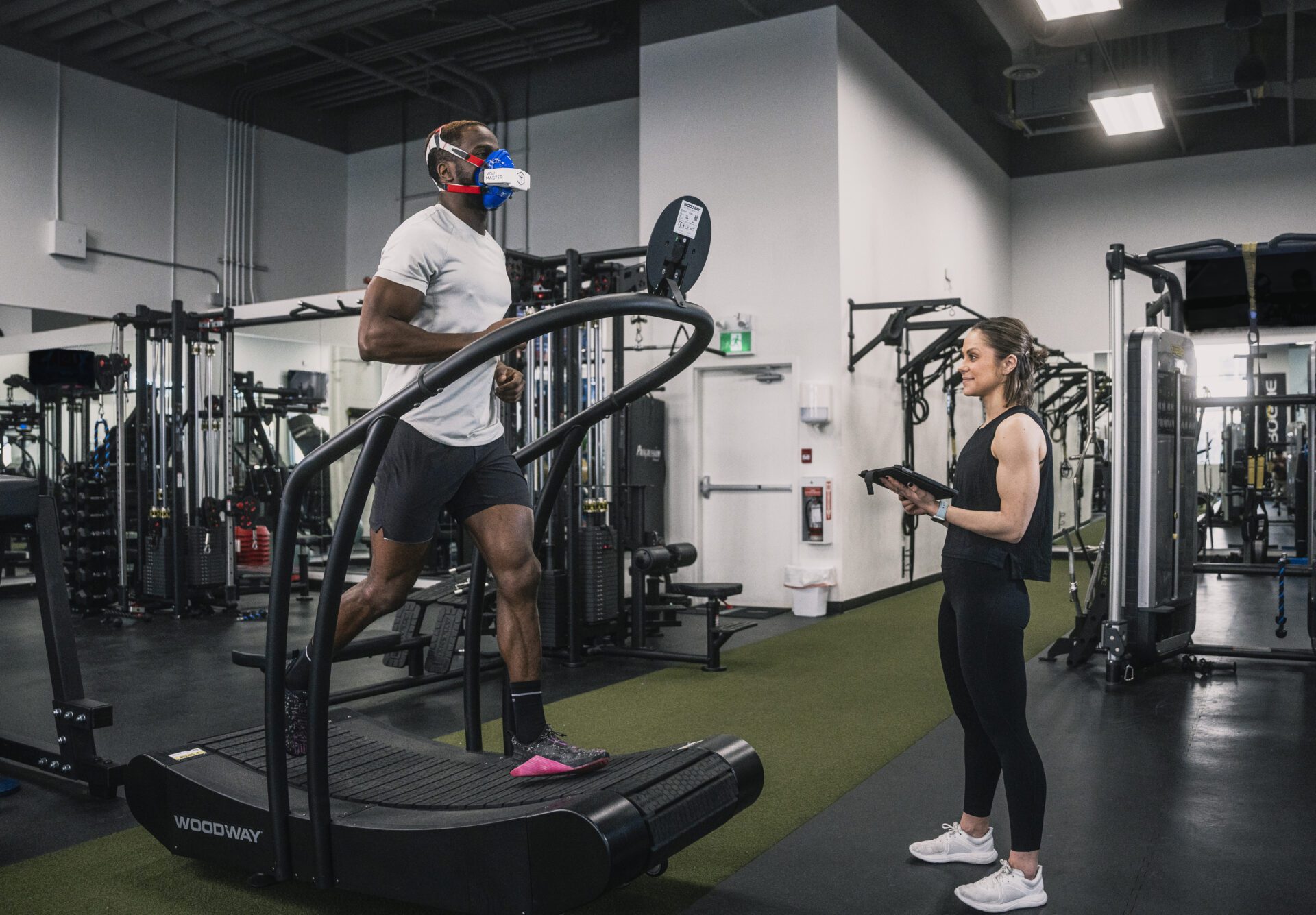
We identified the issue in testing, took the VO2 Master out on the road, and examined how the athlete responded to various breathing interventions.
From there, we followed that up intermittently through long running sessions to reinforce the messaging and ensure he was successful.
Here’s how coaches can apply this with their clients.
Use VO2 Master to see your athlete’s breathing patterns in real-time. Once they’ve reached 20 breaths per minute, slowly increase their intensity but keep that same breath rate. See how fast they can go while still maintaining it. Have them speed up until they lose control of their breathing pattern, take a break, and then try it again.
The speed at which their respiratory pattern changes becomes a new “threshold”, and you can see their improvements week after week.
How often do you recommend endurance athletes conduct these tests?
Every 6 weeks.
The athlete we were training used VO2 Master two to three days per week for four weeks. By the end of that time, he had a good sense of his breathing patterns and could control his breathing effort at various running paces.
Don’t ignore the great information on respiratory dynamics that is available from VO2 Master. There is more to the device than just oxygen consumption.
Breathing pattern analysis is underutilized by a lot of coaches, but it’s incredibly valuable. VO2 Master gives you real-time feedback you can look at while they’re performing and offers you the opportunity to modify on the fly.
